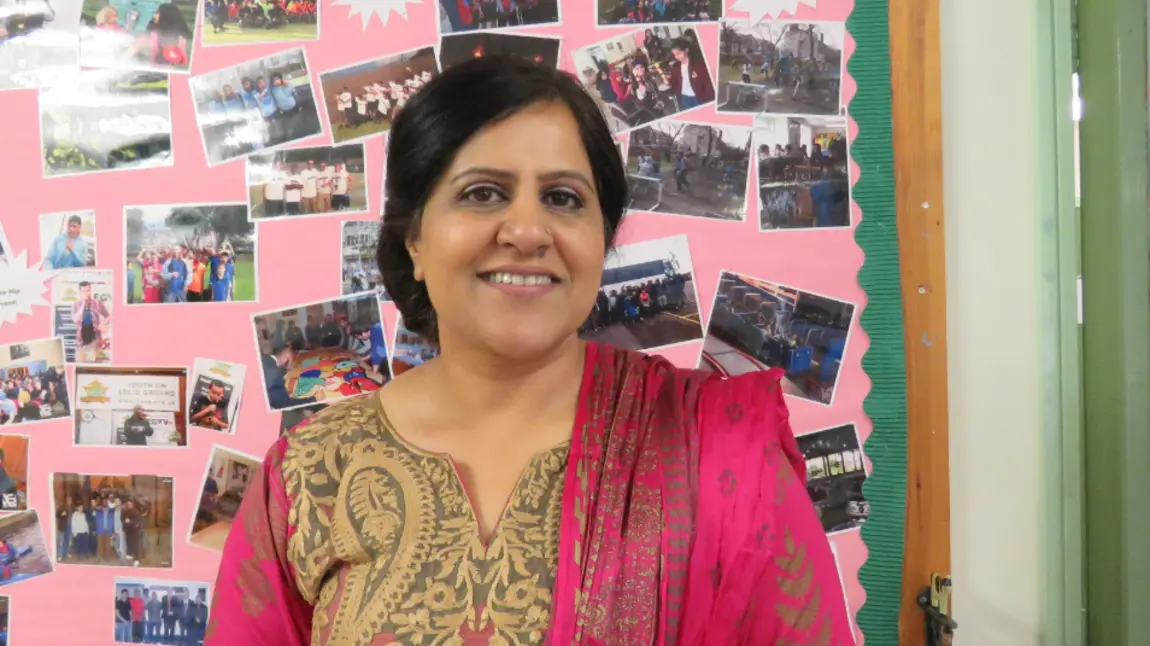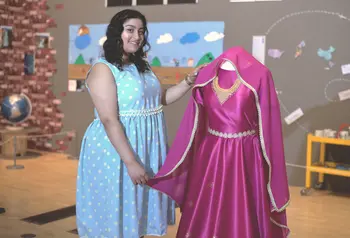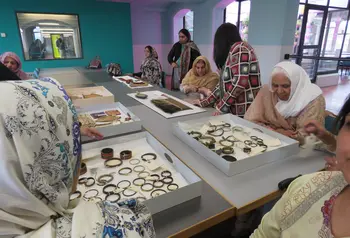Remembering the traditional ‘best times’ of South Asian Women

Growing up, I felt that we did not experience many of the cultural traditions, hobbies and pastimes that my parents had themselves experienced when they were young.
Nusrat Ahmed
Proud heritage
This project is very personal to me. As first generation British born, my parents migrated from Pakistan to the UK in 1962. Making a new life here in UK it was felt that my parents, as with many others of their generation, had to lose many of their traditions to be seen as becoming ‘British’ and accepted by a white community.
Our project explores the hobbies and pastimes of South Asian Women.
I am proud to be of South Asian Heritage. I want to pass this onto my grandchildren and National Lottery funding has created a platform for me to be confident in doing this and for the wider community.
Sharing stories of the past
Growing up, I felt that we did not experience many of the cultural traditions, hobbies and pastimes that my parents had themselves experienced when they were young.
I especially wanted to run this project when I became a Grandmother and I felt that I did not have the knowledge, skills or the experience to pass my parent’s heritage onto my granddaughter, or share many of the things that traditionally are normal for women to do when a new generation is shaped.
We named our project Traditional Best Times of South Asian Women because when we carried out the research and consultation with older women, they smiled when reminiscing about their lives and hobbies before they migrated to UK and said ‘Oh, they were the best times!’
The impact of the project has been huge to all beneficiaries.
Nusrat Ahmed
Invaluable support
Community on Solid Ground has had invaluable support from the Heritage Fund. The funding guide and literature was very useful and helped to form the shape of our project, and the support we received helped greatly with a successful application. We also received support and guidance from Farah Kurji, project officer of the Oxfam Routes to Solidarity project, in putting our application together.
Manchester Museum showcase
We were delighted to have had the unexpected chance to work with and visit the British and Manchester Museums as part of the Object Journeys project.
In January 2017, we co-curated displays and a series of events at Manchester Museum. Embroidery and traditional textile adornments created by our project participants were showcased alongside historical artefacts held at the museum. This fantastic opportunity has increased the sustainability of our project and enabled us to reach bigger audiences.
Project successes
The impact of the project has been huge to all beneficiaries. Older women were very open and willing to tell their stories and welcomed the chance to meet weekly to talk about their lives before they came to UK. They were humbled to have an audience and felt pride in teaching women skills that they thought were of no use to others.
For myself, this project has given me lots to think about, it has allowed me to learn new skills and connect to a part of my own culture.
Nusrat Ahmed
Volunteers and other South Asian British born women were able to learn new skills and get a bigger picture of their own heritage. In reminiscence sessions, we captured memories that shaped the delivery of our project.
What would we do differently?
I would probably have done this project over a longer term. We had to take time-out for Ramadhan and summer holidays as our beneficiaries, in particular 2nd and 3rd generation South Asian women, who were integral to this project, were unable to attend due to childcare. I would probably have carried out this project over at least an 18 months direct delivery time span.
Another practical consideration is transport. It has been unfortunate that Community Transport could only provide transport for older women within a tight 4 hour time span. This did not allow for sessions as long as we intended. If we had applied for a larger budget we might have been able to use backup taxi transport – a lesson for a future project maybe!
For myself, this project has given me lots to think about, it has allowed me to learn new skills and connect to a part of my own culture. I now have a better understanding and feel closer to the older generation.
Top tips for future applicants
- Reach out to mainstream providers such as museums, art galleries, and libraries. They are keen to work with community groups and learn about our heritage and projects as much as we want to work with them.
- Stay focused on your project plan. At the time of writing the bid this took up a lot of my time but now it makes sense that the more detailed this is, the easier it is to keep on track with the project and the outcomes.
- We were not successful in our first application for this project, but after receiving advice from the Heritage Fund we were able to secure the funding on our second attempt. Do not give up if this happens and seek advice - there is a lot out there.

